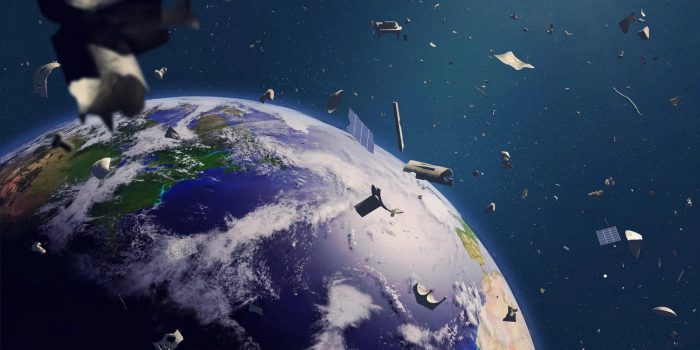On February 10, 2009, a serious incident occurred in space above the Siberian Peninsula. A non-functional Russian satellite collided with a communication satellite called Iridium 33, resulting in a shower of debris consisting of over 1,800 fragments. Fortunately, no one was injured, but this event highlighted the growing problem of space debris.
According to NASA, there are currently around 23,000 sizable debris objects orbiting Earth. With so much junk floating around, the chances of another collision similar to the Iridium 33 incident increase each year. This could have even more severe consequences.
“The problem with space debris is that once you have a collision, you’re creating even more space debris,” said Julian Hammerl, a doctoral student in aerospace engineering sciences at CU Boulder. “You have an increased likelihood of causing another collision, which will create even more debris. There’s a cascade effect.”

To prevent future space disasters, Professor Hanspeter Schaub and his team, including researcher Hammerl, are working on a solution inspired by science fiction. They aim to develop a fleet of small spacecraft equipped with “electron beams” that can safely remove space debris without physical contact. These beams utilize the principles of physics that cause objects to stick together, like your socks sticking to your pants in the dryer.

“We’re creating an attractive or repulsive electrostatic force,” said Schaub, chair of the Ann and H.J. Smead Department of Aerospace Engineering Sciences. “It’s similar to the tractor beam you see in Star Trek, although not nearly as powerful.”
“Touching things in space is very dangerous. Objects are moving very fast and often unpredictably,” said Kaylee Champion, a doctoral student working with Schaub. “This could open up a lot of safer avenues for servicing spacecraft.”

However, before this technology can be implemented, several challenges need to be overcome. The researchers are replicating the complex space environment in a unique facility called the Electrostatic Charging Laboratory for Interactions between Plasma and Spacecraft (ECLIPS).
Within this chamber, they simulate the conditions around Earth using metal cubes or other shapes to represent debris.

The focus of their experiments is the geosynchronous orbit (GEO), located approximately 22,000 miles from Earth’s surface. This region is home to valuable satellites, including military and telecommunications spacecraft.
With only 180 available parking spots in GEO, all of which are already claimed or occupied, the researchers believe that tractor beams could help safely move old satellites, making room for new ones.
The concept of the “electrostatic tractor” is comparable to rubbing a balloon on your head to make your hair stand on end. In this scenario, a servicing ship would approach a defunct satellite and use electron beams to give the debris a negative charge while making the servicer positively charged. Opposite charges attract, allowing the servicer to pull the satellite away slowly.
While this approach has shown promise in experiments and computer models, implementing it in space poses significant challenges. Decommissioned satellites often tumble unpredictably, but by using rhythmic pulses of electrons, the researchers can potentially stabilize their rotation. This would enable safe towing or repairs.

The researchers are also considering the “cislunar” space, the region between Earth and the Moon. Here, the solar wind and plasma environment can be disruptive. To address this, they have introduced an “ion gun” to the ECLIPS chamber, creating fast-moving currents of argon ions. These experiments could contribute to NASA’s Artemis Program and future space exploration missions.
Schaub believes that with adequate funding, a prototype electrostatic tractor could be ready for launch within the next five to ten years. This new technology could very soon revolutionize and solve the growing issue of space debris removal and pave the way efficient space exploration which includes future missions to Mars.
“The exciting thing about this technology is that the same servicing craft could move two or three or even dozens of objects during its lifetime. That brings your cost way down,” Schaub said. “No one wants to spend a billion dollars to move trash.”


